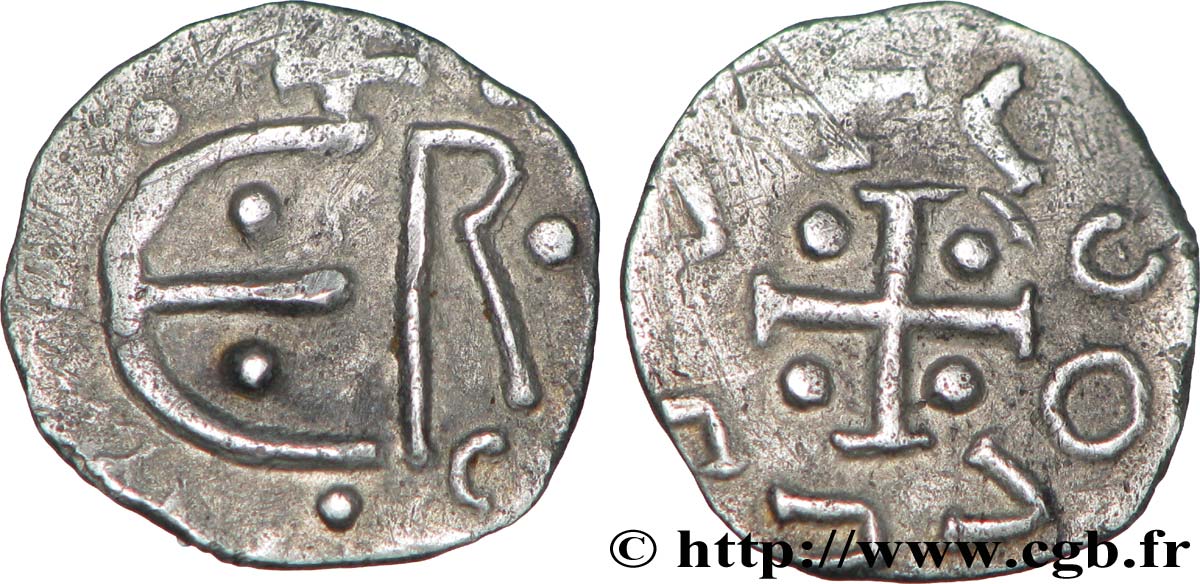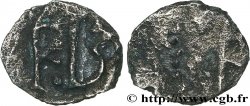bmv_290401 - LEMOVECAS - LIMOGES (Haute-Vienne) Denier ER, LOEDEGILVS monétaire
Not available.
Item sold on our e-shop (2013)
Price : 580.00 €
Item sold on our e-shop (2013)
Price : 580.00 €
Type : Denier ER, LOEDEGILVS monétaire
Date: (VIIIe siècle)
Mint name / Town : Limoges (87)
Metal : silver
Diameter : 13,5 mm
Weight : 1,15 g.
Rarity : R3
Coments on the condition:
Très belle monnaie sur un flan large et très légèrement voilé. Frappe centrée et relativement vigoureuse. Fine patine grise, comme nettoyée en surface
Catalogue references :
Obverse
Obverse legend : + LÉGENDE INDÉTERMINÉE.
Obverse description : ER en plein champ avec des globules et un annelet dans le champ.
Reverse
Reverse legend : + LOOALS (...).
Reverse description : Croix grecque potencée, cantonnée de quatre globules ; légende autour.
Commentary
Les lettres ER signifieraient Ecclesiae Racio. Ces deniers étaient classés de façon douteuse à Paris. D’Amécourt signale que ces monnaies ont été trouvées dans les dragages de la Loire. Cette série est désormais attribué à l’église de Limoges et à Neuvic-d’Ussel (B. 6340). Ces monnaies sont rares et leur classement reste limité (cf. Moneta p. 134).
Ce denier correspond exactement au Belfort 3561, avec la même composition avec les globules et l’annelet au droit, et la même légende au revers. Le B. 3561 appartenait à la collection de P. d'Amécourt et provenait d'Orléans.
Ce denier correspond exactement au Belfort 3561, avec la même composition avec les globules et l’annelet au droit, et la même légende au revers. Le B. 3561 appartenait à la collection de P. d'Amécourt et provenait d'Orléans.








 Report a mistake
Report a mistake Print the page
Print the page Share my selection
Share my selection Ask a question
Ask a question Consign / sell
Consign / sell
 Full data
Full data